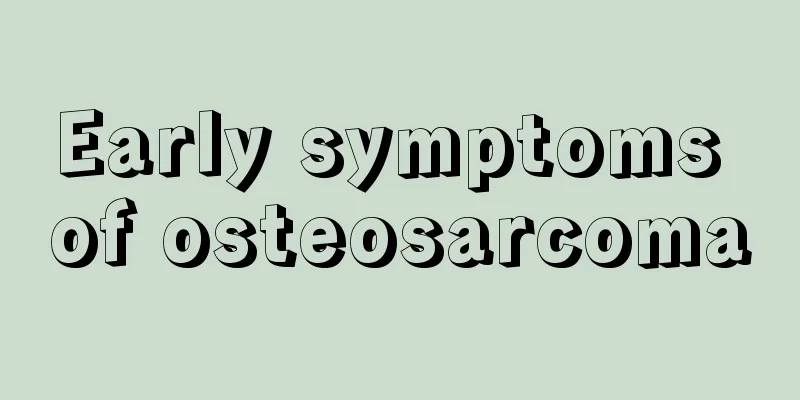Six major pathological types of intussusception

|
Any disease has its pathology and factors. Therefore, before treatment, patients need to do some physical health checks and understand the disease so that they will know what treatment method is best. What are the pathophysiology and classification of intussusception? Many people don’t know much about it. This disease is divided into different types, especially in classification. Therefore, before treatment, we must have a comprehensive understanding of this disease. What are the pathophysiology and classification of intussusception? A detailed introduction is given below. However, when treating such a disease, patients must actively cooperate with doctors, especially in terms of diet and daily routine, and reasonable arrangements must be made. Pathophysiology and classification of intussusception: Intussusception is generally divided into three layers in the longitudinal section: the outer layer is the intussusception sheath or outer tube, and the intussusception part is the inner tube and the middle tube. The farthest point of intussusception is the head or top, and the point where the intestine enters from the outside is the neck. Intussusception is mostly antegrade in the same direction as intestinal peristalsis. After intussusception occurs, the intussuscepted part continues to advance with intestinal peristalsis, and this section of the intestine and its mesentery are also intussuscepted into the sheath, and the neck is tightened so that it cannot withdraw automatically. Due to the continuous spasm of the sheath intestine, the invaginated intestine suffers from circulatory disorders, initial venous return is blocked, tissues are congested and edematous, veins are dilated, and mucosal cells secrete a large amount of mucus, which enters the intestinal cavity and mixes with blood and feces and is discharged in a jam-like jelly state. Further development leads to intestinal wall edema and aggravated venous reflux disorder, which infects the arteries, causes insufficient blood supply and eventually leads to intestinal wall necrosis. Intussusception is divided into the following types based on the location of the most proximal invagination and distal invagination segments: 1. The small intestinal type includes jejunal intussusception type, ileal intussusception type and jejunal intussusception type. 2. The ileocecal type uses the ileocecal valve as the starting point. 3. The ileum-knot type uses the terminal ileum as the starting point, and the appendix is not inserted into the sheath. This type is the most common, accounting for about 70% to 80%. 4. Colonic type. 5. The complex or multiple intussusception type is commonly a convoluted knot type, accounting for about 10% to 15% of intussusception. 6. Multiple intussusception occurs when two, three or more separate intussusceptions occur in different areas of the intestine. The hazards of intussusception: The diagnosis of intussusception is time-sensitive. Delayed diagnosis and treatment often cause serious sequelae. If a baby develops intussusception, he or she should be sent to the hospital for treatment immediately. Otherwise, the disease will be delayed, and the blood circulation of the intussuscepted part of the intestinal wall will be obstructed, causing the intestinal wall to die and perforate, leading to peritonitis and even death. Intussusception is a common abdominal emergency in children. It is when a section of the intestine is sunken into its distal end, like a folded monocular telescope. The age of onset is mostly between 5 months and 1.5 years old, with 80% of cases occurring under 1 year old. It is most common between 5 months and 9 months old, and is more common in male babies than female babies. Some seasonal outbreaks - such as those in the spring - may be associated with certain viruses. Through the above introduction, we have some understanding of the pathophysiology and classification of intussusception. Therefore, when such a disease occurs, the patient should be sent to the hospital for treatment in time. This will be of great help to the patient in all aspects, will not harm the patient's body in all aspects, and will also be simpler to treat. |
<<: The correct bathing posture is very important, enjoy this wonderful time
>>: What items should be checked for bleeding diseases and what is the significance of each item
Recommend
How to educate a child who loves to lie?
Children are innocent. Most of them can maintain a...
The preventive measures for cervical cancer are as follows
Cervical cancer occurs every year in China, and i...
Cervical examination can be done by gynecologists. Women over 30 years old need regular examinations.
You can choose to visit a gynecologist for cervic...
Why your skin becomes dark even without sun exposure
Some people have darker skin because they don'...
Maintaining a good attitude can effectively prevent brain cancer
Brain cancer is a serious malignant tumor clinica...
Can washing your face with pure milk remove freckles?
Some friends may have some spots on their faces a...
Headache, feeling uncomfortable and want to vomit
If multiple symptoms such as discomfort, headache...
What is the treatment method for erosive gastritis?
At present, many people suffer from stomach probl...
What is the best thing to eat when you have lung cancer? Recommended dietary health tips for lung cancer patients
Now, for many lung cancer patients, many people c...
Will it be bad to get hyaluronic acid injections for a long time?
Water-light injection is a beauty method that can...
What are the early symptoms of conjunctivitis
I believe many of my friends have heard of conjun...
Is it good to take detoxifying and beauty capsules for a long time?
Having smooth and soft skin is the dream of many ...
What are the early symptoms of osteosarcoma
Although osteosarcoma is a malignant tumor, it is...
How long can a patient with advanced liver cancer live in a coma
There is no clear answer to how long you can live...
What are the anti-inflammatory drugs for anal pain?
The anus is a very important part for people, and...









